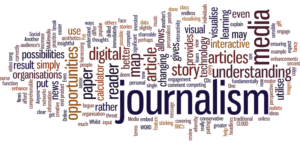Written and compiled by Sanni mojeed Abdullahi
The Polytechnic Ile-Ife, Osun State
In media communication, where clarity, coherence, and precision are key, the ability to convey messages effectively can determine the success or failure of content. Whether the goal is to inform, persuade, or entertain, ensuring that the audience comprehends and retains the information is paramount. One of the most essential tools in achieving this is the sketched outline. A sketched outline serves as a blueprint that guides the communicator in organizing thoughts, structuring content, and ensuring that the intended message is delivered with precision and impact. It offers a clear path from idea to execution, facilitating the creation of concise and engaging media content.
Organization of Ideas
First and foremost, a sketched outline allows for better organization of ideas. Media communication—whether it’s a news report, a feature article, an opinion editorial, or a broadcast script—often involves complex ideas and numerous elements that must be seamlessly woven together. Without a clear structure, these elements can become disjointed, leading to confusion for both the communicator and the audience. An outline helps the communicator arrange key points in a logical flow, ensuring that the message unfolds in a coherent manner. By mapping out the progression of the narrative, the outline ensures that the introduction, body, and conclusion are connected, making it easier for the audience to follow along and grasp the overall message.
For example, in a news report, the sketched outline ensures that the \”who, what, where, when, why, and how\” are addressed in the most logical sequence. In feature writing, an outline can help balance narrative storytelling with factual reporting, ensuring neither element overshadows the other. For a broadcast script, the sketched outline provides a guide to transitions between segments, keeping the flow smooth and the content on track.
Maintaining Focus and Relevance
Secondly, a sketched outline ensures that the content remains focused and relevant. In the fast-paced world of media, there is often a temptation to include excessive details, tangents, or unrelated information, especially when trying to make content more engaging or appealing. However, deviating from the main topic can dilute the core message and confuse the audience. The outline serves as a roadmap that keeps the communicator on track, ensuring that all critical points are covered without losing sight of the overall objective. It helps writers and speakers avoid unnecessary digressions that can detract from the main narrative or lead to time-wasting redundancies.
In formats with time or space constraints, such as news broadcasts, social media posts, or editorials, staying focused is especially important. Audiences in these formats often have limited attention spans and expect clear, concise information. An outline helps trim excess content and ensures that the most important aspects of the message are delivered within the allotted time or word limit.
Moreover, when dealing with sensitive or controversial topics, a well-structured outline can help ensure that the communicator addresses all sides of the issue in a balanced manner, avoiding bias or unintentional omission of key points. This approach enhances credibility and fairness, vital qualities in media communication.
Enhancing Efficiency
Additionally, using a sketched outline significantly enhances efficiency. In fast-paced media environments where deadlines are tight and content must be produced rapidly, the outline becomes a time-saving tool. It provides a clear framework for content creation, allowing communicators to start writing or speaking without the need to continually rethink or rearrange ideas. Rather than grappling with how to begin or what direction to take next, communicators can follow their outline, ensuring that their content progresses logically and consistently.
For instance, when preparing a radio show, a sketched outline allows the host to focus on delivering content smoothly, as the structure is already in place. It prevents on-air pauses or confusion about what topic to address next. Similarly, in writing, an outline allows the journalist or content creator to move efficiently from one point to another, ensuring that each paragraph or section serves the overall narrative.
Beyond saving time during the creation process, the sketched outline also aids in the revision stage. With a clear outline, it becomes easier to spot areas where information may be lacking or sections where the argument might need to be strengthened. This makes the editing process more streamlined and effective.
Achieving Precision and Impact
The precision and impact of a media message depend on how well the information is delivered. A sketched outline provides the foundation needed to ensure that the communicator stays on point, reducing the chances of wandering off into irrelevant or secondary topics. This precision is particularly crucial in the competitive world of media, where audiences are often bombarded with content from various sources. To stand out, media communication must be sharp, concise, and impactful.
For example, in public relations communication, where messages need to be controlled and concise, a sketched outline ensures that every statement aligns with the organization\’s goals. It helps ensure that key messages are consistently reinforced, and that the communicator doesn’t inadvertently share irrelevant or damaging information. Similarly, in investigative journalism, an outline ensures that facts are presented logically and that conclusions are based on sound evidence.
The impact of a well-delivered message is further enhanced when it follows a sketched outline. With a clear structure, the communicator can highlight key moments, use persuasive language effectively, and build a narrative that engages the audience from start to finish. A well-crafted outline enables a climax to the communication—a moment of revelation or emotional impact that stays with the audience long after the communication ends.
In summary, a sketched outline is indispensable in effective media communication. It serves as a guide for organizing ideas, maintaining focus, and enhancing efficiency, all while ensuring that the message is delivered with clarity and maximum impact. Whether one is writing a news article, preparing a broadcast script, or delivering a public speech, the importance of planning through a sketched outline cannot be overstated. In the dynamic and demanding field of media, where precision, relevance, and timing are critical, the sketched outline stands as a crucial tool in crafting messages that resonate and stick with the audience. By laying the groundwork for clear, coherent, and engaging communication, the sketched outline helps ensure that media professionals consistently deliver their content in the most effective manner possible.

Ibraheem GBADEGESIN is a versatile content writer and web designer with over five years of experience. Specializing in WordPress, SEO, and website monetization, he has helped businesses like InfoGiant FM and DNewsInfo grow their online presence. Known for his creative solutions and technical expertise, Ibraheem is committed to delivering engaging web projects that drive results and help clients succeed.









